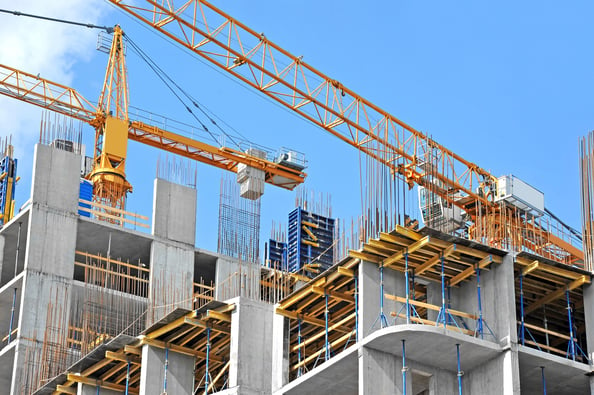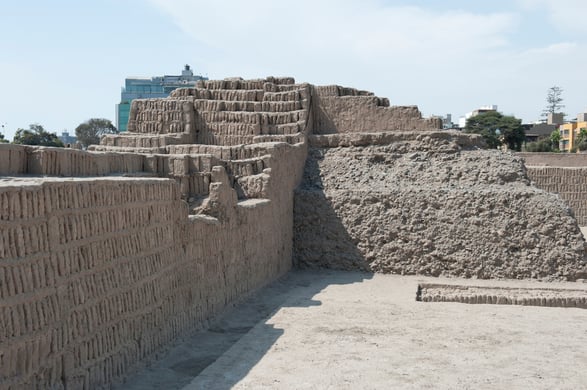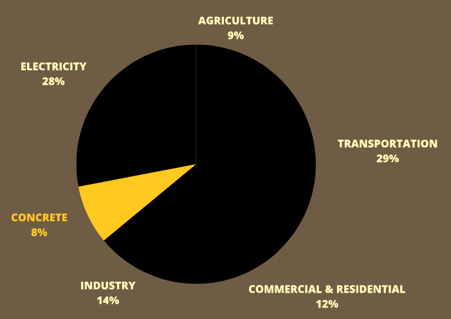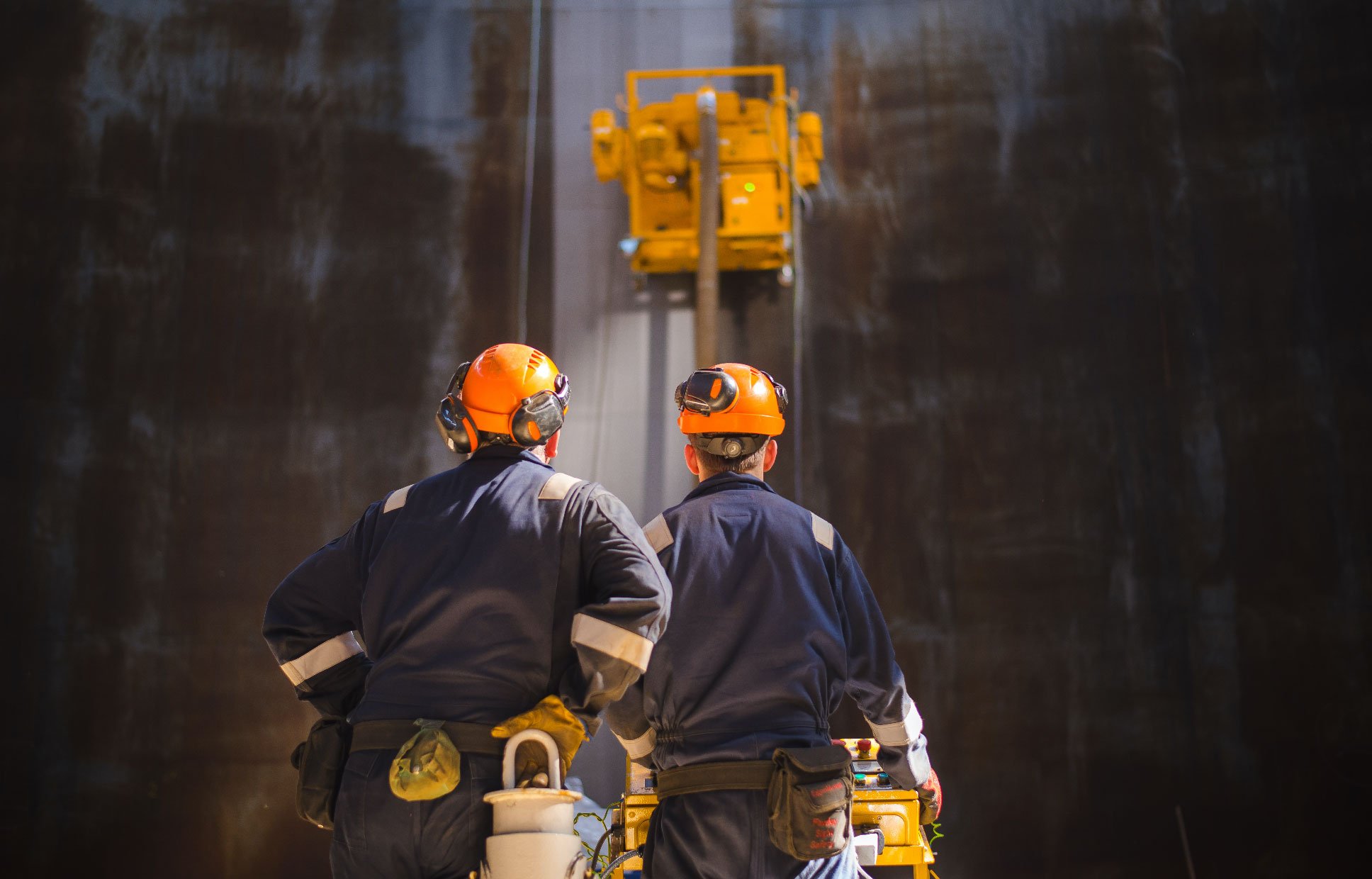
Question… what is the most utilized substance in the world? If you choose water, you are correct, kinda obvious, right? But if you were asked, what is the second? How many people would have said Concrete before we started reading this article? I certainly would not have. but it is true. Concrete at over 10 billion tons a year is the second most utilized substance in the world!
For all of us, whether we are contractors, equipment and materials manufacturers, distributers, sales teams, architects, designers, end-users and many more, we all deal to one degree or another with concrete, most of us, every day. We spec it, prep for it, place it, grind and profile it, even polish it and we have probably never given much thought to where it came from, the history of Concrete.
I never thought about it, and I have worked in the trades and dealt with concrete since I was 14 years old, I never gave it much thought either until I started profiling and polishing concrete, I was then forced to learn a lot about the differences in concrete, but not its history, it was not until I started researching information for this article that I started to appreciate the long and interesting history of concrete.
What did I learn? Concrete in various forms has been around civilization to one degree or another for thousands of years. It is one of the most ubiquitous and versatile building materials in the world, with a truly rich history. From ancient civilizations to modern engineering marvels, to the patios in our backyards concrete has played a crucial role in shaping the "Built environment" we all inhabit.
In this article, we'll explore the fascinating history of concrete, tracing its evolution from its humble beginnings to its current status as a cornerstone of modern construction.
Ancient Origins

The story of concrete begins in truly ancient times, some say, incredibly, as early as 6,500 BC, that’s over 8,500 years ago! Bedouins in what is now Syria were using a form of concrete that used Hydraulic Lime or quick lime that sets by the process of hydration, even under water, to make floors, walls, and cisterns.
3,000 BC or 5,000 years ago, with early civilizations such as the Egyptians, Greeks, and Romans were experimenting with various forms of rudimentary concrete. The ancient Egyptians used a mixture of mud and straw to create bricks for their buildings, while the Greeks developed a primitive form of concrete using a mixture of lime, sand, and water. However, it was the Romans who truly mastered the art of concrete construction.
Roman Concrete
The Romans are renowned for their advanced engineering skills, and their development of concrete was no exception. Around 300 BCE, the Romans began using a revolutionary form of concrete known as "opus caementicium," which was made from a mixture of lime, volcanic ash, and water. This new type of concrete was incredibly strong and durable, allowing the Romans to construct large-scale infrastructure projects such as aqueducts, bridges, and monumental structures like the Colosseum and the Pantheon. Structures that still exist today, thousands of years later! There are even aqueducts still in use today that were built over 2,000 years ago!

One of the key innovations of Roman concrete was the use of volcanic ash, which acted as a pozzolan—a substance that reacts with lime to form a strong, cement-like material. This pozzolanic reaction gave Roman concrete its exceptional strength and durability, allowing it to withstand the test of time.
Middle Ages to Industrial Revolution
After the fall of the Roman Empire in 476 AD, the use of concrete declined in Europe during the Middle Ages, as the knowledge of concrete technology, the “Pozzolan Cement” was lost or forgotten in Europe for a 1,000 years. However, concrete continued to be used in other parts of the world, such as in the construction of the Great Wall of China.
It wasn't until the Industrial Revolution starting in the 1760’s that concrete experienced a resurgence in Europe. The development of new construction techniques and the invention in 1824 by a guy named Joseph Asplund (This is starting to sound familiar) in Portland England and invented the now well know Portland cement—a key ingredient in modern concrete—led to a renewed interest in concrete as a building material.
Modern Concrete
In the 19th and 20th centuries, concrete underwent a series of technological advancements that transformed it into the versatile material we know today. The invention of reinforced concrete, which incorporates steel bars or mesh to increase its tensile strength, revolutionized the construction industry and allowed for the creation of taller buildings, longer bridges, and more complex structures. Some notable recent highlights...
- 1903 first concrete high-rise building
- 1936 Hover Dam, a 4,400,000cubic yards of concrete structure that engineers say could last for 10,000 years!
- 1956 the start of the US interstate highway system
- 1963 the first concrete sports dome
- 1992 the tallest reinforced concrete skyscraper
Today, concrete is used in a wide range of applications, from skyscrapers and bridges to roads, dams, artistic sculptures and even that patio in your backyard. Modern concrete mixtures can be tailored to meet specific performance requirements,
Click Here for more information on the make-up of concrete
The surprising challenge and Concrete’s latest evolution to address it…

Percentages of greenhouse gas production
Because Concrete is the second most consumed product in the world, it is manufactured literally EVERYWHERE! And unfortunately, the process of manufacturing concrete produces a lot of Co2, a Greenhouse gas, This is an environmental challenge because the production of concrete accounts for 8% of Co2 emissions worldwide, this is not good.
The answer? Innovative Technology, The next evolution in concrete…

That evolution is GREEN CONCRETE,
Green Concrete is a sustainable and eco-friendly alternative to traditional concrete. Green concrete uses a variety of waste materials from different industries to partially replace the energy-consuming production of Portland cement with materials like Fly Ash, Silica Fume, and Wood Ash. These materials can in some cases, actually make concrete harder, less permeable, increases compression strength. Some concrete mixes are even using paper, used glass, concrete debris, and waist plastic. The reuse of these products along with the positive impact of less materials having to be deposited in landfills, along with the recycling of water in the manufacturing process results in concrete evolving into a green, sustainable material for modern construction. Making it an ideal choice for modern day environmentally conscious construction projects.
Conclusion...
From its humble beginnings in ancient times, 8,500 years ago to its current status as an environmentally friendly cornerstone of modern construction, the history of concrete is a testament to human ingenuity and innovation.
Over the centuries, concrete has evolved from a simple mixture of mud and straw to a sophisticated building material that has shaped the world we live in. As we continue to push the boundaries of construction technology, concrete is likely to remain a vital component of our "Built environment" for many years to come.
BARTELL GLOBAL and the concrete construction industry…
For over 75 years now Bartell Global has proudly been a part of the concrete industry with our manufacturing of compaction equipment, screeding and power troweling equipment along with our surface-preparation equipment like concrete diamond grinder/polishers, shot-blasters, scarifiers, shavers, and our line of walk-behind and ride-on concrete scrapers. We are able to provide contractors with the latest innovative technologies in the concrete placement and concrete resurfacing industry.
Bartell Global works hard to be a trusted source for information related to our industry, check out concrete related subjects and the equipment we manufacture on our website by clicking below…

Top of Form
Bottom of Form


 By
By